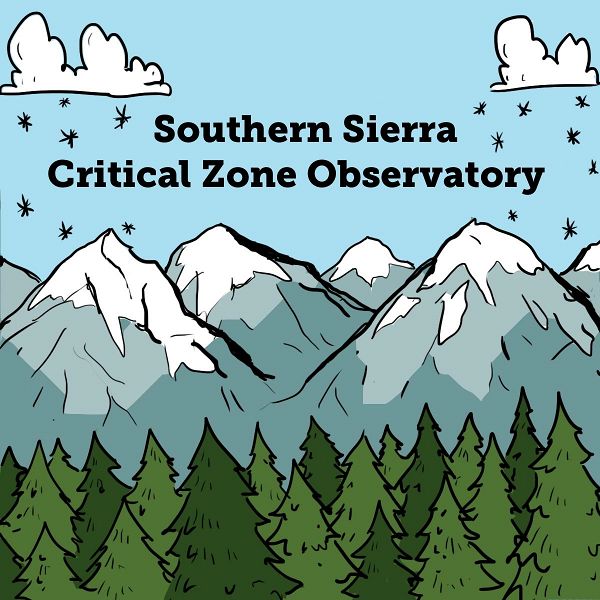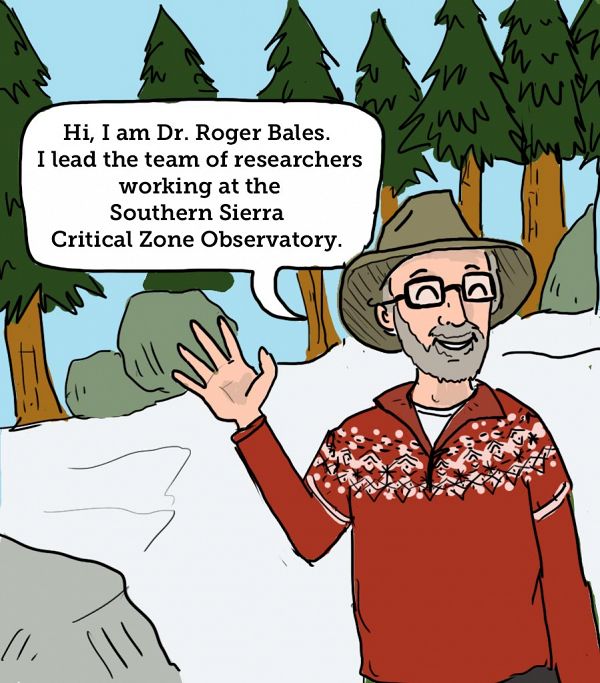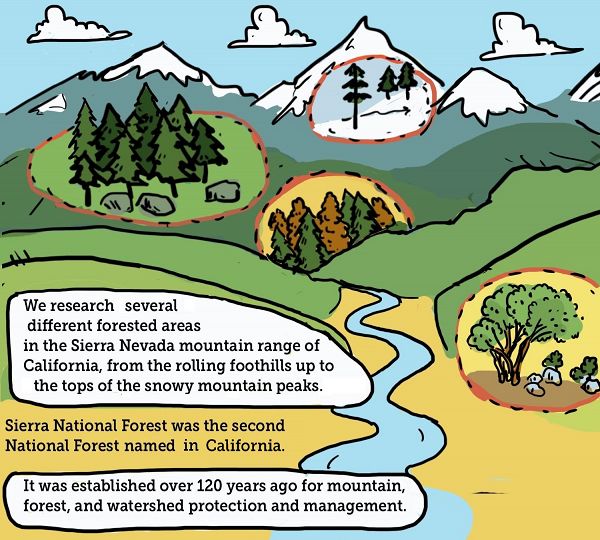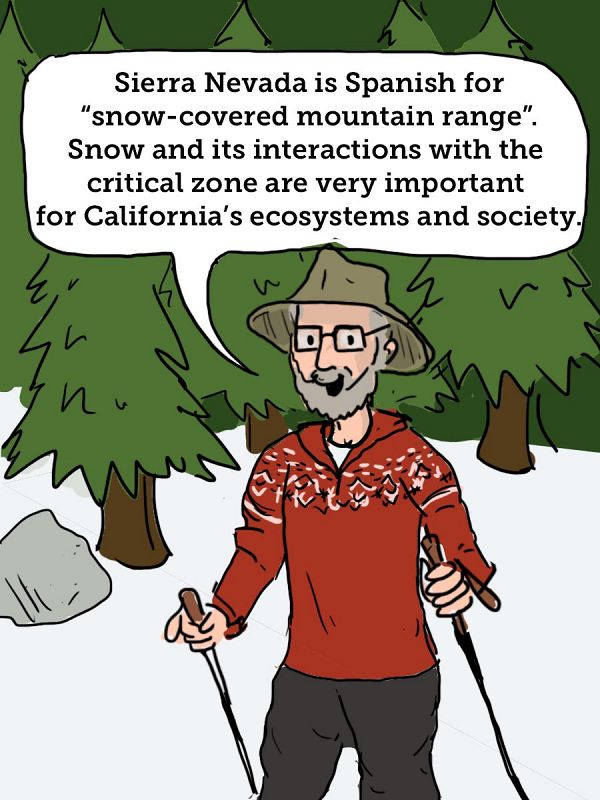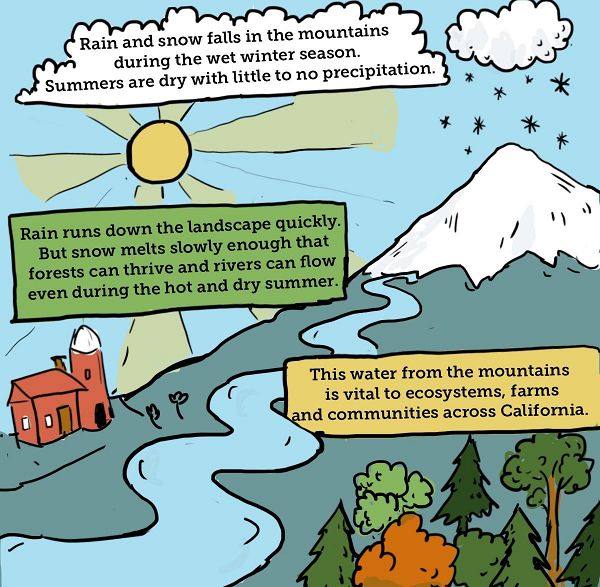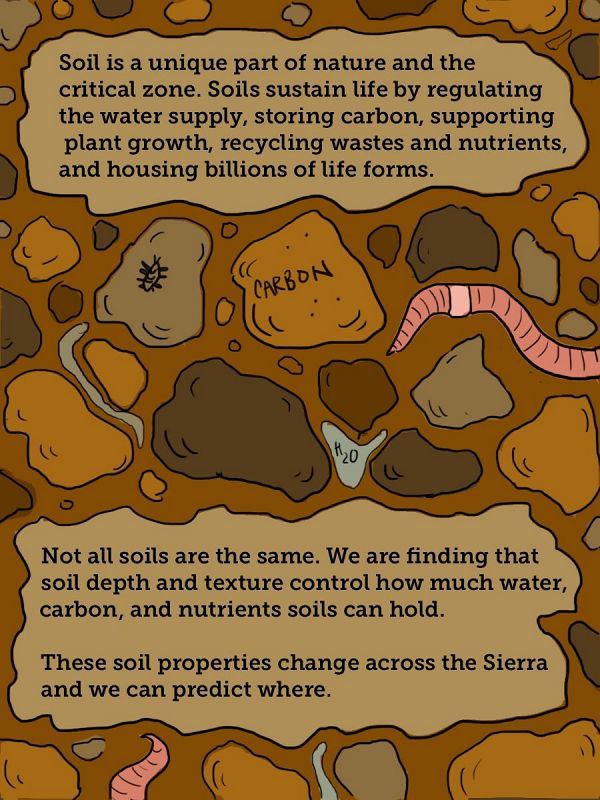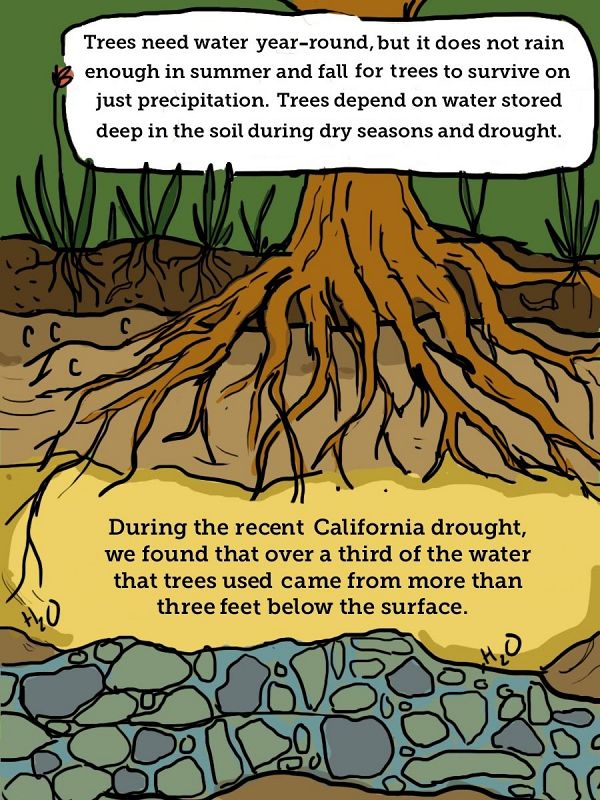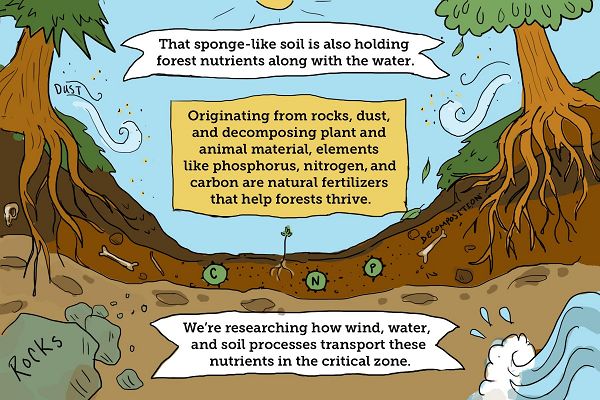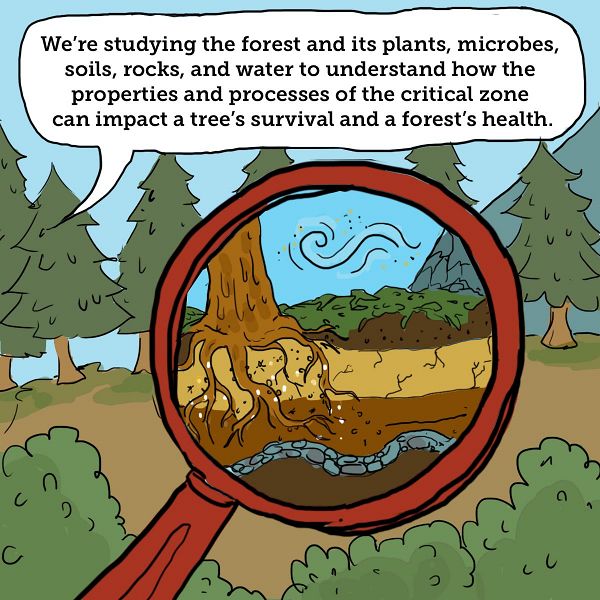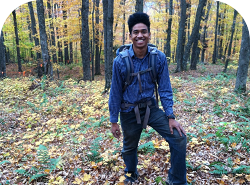Jul 17, 2017
An illustrated introduction to the Southern Sierra Critical Zone Observatory!
By Dr. Justin Richardson and Michelle Gilmore
Illustrated by Alana McGillis.
Panel 1. A view of the snowy Sierra Nevada Mountains found in the Southern Sierra Critical Zone Observatory (SSCZO).
Panel 2. Dr. Roger Bales stands on a snowy slope, waves and says, “Hi, I am Dr. Roger Bales. I lead the team of researchers working at the SSCZO.”
Panel 3. Research here looks at several different forested areas in the Sierra Nevada mountain range of California, from the rolling foothills up to the tops of the snowy mountain peaks. The Sierra National Forest was the second National Forest named in California. It was establish over 120 years ago for mountain, forest, and watershed protection and management.
Panel 4. Dr. Bales skis and says, “Sierra Nevada is Spanish for ‘snow-covered mountain range.’ Snow and its interactions with the CZ are very important for California’s ecosystems and society.”
Panel 5. Rain and snow fall in the mountains during the wet winter season. Summers are then dry with little to no precipitation. Rain runs down the landscape quickly, but the snow melts slowly enough that forests can thrive and rivers can flow even during the hot and dry summer. This water from the mountains is vital to ecosystems, farms and communities across California.
Panel 6. California has been in a multi-year drought. Millions of trees have died during the drought. But many trees are surviving too, even right next to dead ones. This survival is linked with trees’ access to water and nutrients stored in the CZ subsurface: the soil.
Panel 7. Soil is a unique part of nature and the CZ. Soils sustain life by regulating the water supply, storing carbon, supporting plant growth, recycling wastes and nutrients, and housing billions of life forms. Not all soils are the same. We are finding that soil depth and texture control how much water, carbon, and nutrients soils can hold.
Panel 8. Rain and snowmelt infiltrate into soil. Like a sponge, soil can retain lots of water in its air pockets.
Panel 9. Trees need water year-round, but it does not rain enough in summer and fall for trees to survive on just precipitation. Trees depend on water stored deep in the soil during dry seasons and drought. During the recent California drought, we found that over a third of the water that trees used came from more than three feet below the surface.
Panel 10. That sponge-like soil is also holding forest nutrients along with the water. Originating from rocks, dust, and decomposing plant and animal material, elements like phosphorus, nitrogen, and carbon are natural fertilizers that help forest thrive. We’re researching how wind, water, and soil processes transport these nutrients in the CZ.
Panel 11. The SSCZO studies the forest and its plants, microbes, soils, rocks, and water to understand how the properties and processes of the CZ can impact a tree’s survival and a forest’s health.
Panel 12. Dr. Bales stands among SSCZO researchers and says, “Knowing more about how soils are structured, water flows, and forests function in the CZ allows people to better manage and preserve this ecosystem.”
Files
What is the Southern Sierra CZO?
(920 KB pdf)
Printable 2-page version of this comic.

Justin B. Richardson
CZO INVESTIGATOR, STAFF. National Office outreach officer, Former CZO Post-Doctoral Fellow. Specialty: Soil biogeochemistry of plant-essential and toxic metals.
Outreach / Education Research EDUCATION/OUTREACH General Public K-12 Education
COMMENT ON "Adventures in the Critical Zone"
All comments are moderated. If you want to comment without logging in, select either the "Start/Join the discussion" box or a "Reply" link, then "Name", and finally, "I'd rather post as a guest" checkbox.
ABOUT THIS BLOG
Justin Richardson and his guests answer questions about the Critical Zone, synthesize CZ research, and meet folks working at the CZ observatories
General Disclaimer: Any opinions, findings, conclusions or recommendations presented in the above blog post are only those of the blog author and do not necessarily reflect the views of the U.S. CZO National Program or the National Science Foundation. For official information about NSF, visit www.nsf.gov.
Explore Further

